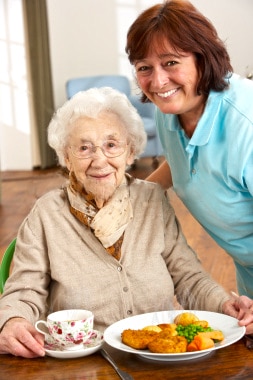From the Department of Health and Ageing – Implementing OHS in Residential Aged Care
- Risk Control – Responding to Systemic Hazards
- Procedures and Training
A regular training schedule should be planned that ensures:
- all new employees receive emergency training within one week of beginning work
- training in the use of fire equipment for all personnel at least once per year
- practice evacuations are conducted every six months. These exercises should take into account varying conditions, including staffing levels at day, night and weekends, and visitors being present. Where possible, residents should be included in evacuations. Where it is considered unwise to involve residents in evacuations, the drill should take into account the likely time to evacuate frail and less mobile residents, that is, staff should pretend that they are in fact evacuating these people
- managers and supervisors are included in all the training and practices. Training of night staff should be given priority, since this is when fires are most likely to result in injury or fatality (as residents are often asleep, medicated, on oxygen, etc).
In addition to practice evacuations, ‘desk top’ exercises should be a vital part of the practical training. A desk top exercise is a discussion using floor plans and ‘what if’ scenarios. These discussions enable all personnel to talk through perceived problems and work out practical solutions without the pressure of time restrictions or distressed residents. They should be used as a preliminary to practice evacuations. Desk top exercises can be helped by establishing some solid timings, for example, by getting some staff members to time how long it would realistically take them to move the less mobile residents under their care.
This extract is from the Aged Care Accreditation Agency website.
4.2 Regulatory Compliance
- There are various state and territory laws and guidelines which govern fire, security and emergency management systems of homes. Whilst assessor do not assess compliance with such requirements, the home should be able to demonstrate how it’s processes are in accordance with relevant protocols. The home identifies and ensures that it complies with all relevant legislation, regulations, professional standards and guidelines for Standard Four, including fire, security and other emergency risk. – Refer NSW DOH Fire Safety in Health Care Facilities 2010-24 (This is recognised as the industry standard in NSW), AS 4083-2010 Planning for Emergencies-Healthcare Facilities, the OHS Act.
4.3 Staff Education and Development
- All staff should be skilled and knowledgeable in the processes involved with managing a fire, security or emergency risk, including evacuation. This is relevant to ensure that provision is made for adequate initial and update training in the home’s procedures for managing risk associated with fire, security and evacuation. – Refer NSW DOH Fire Safety in Health Care Facilities 2010-24, AS 4083-2010 Planning for Emergencies-Healthcare Facilities, the OHS Act



